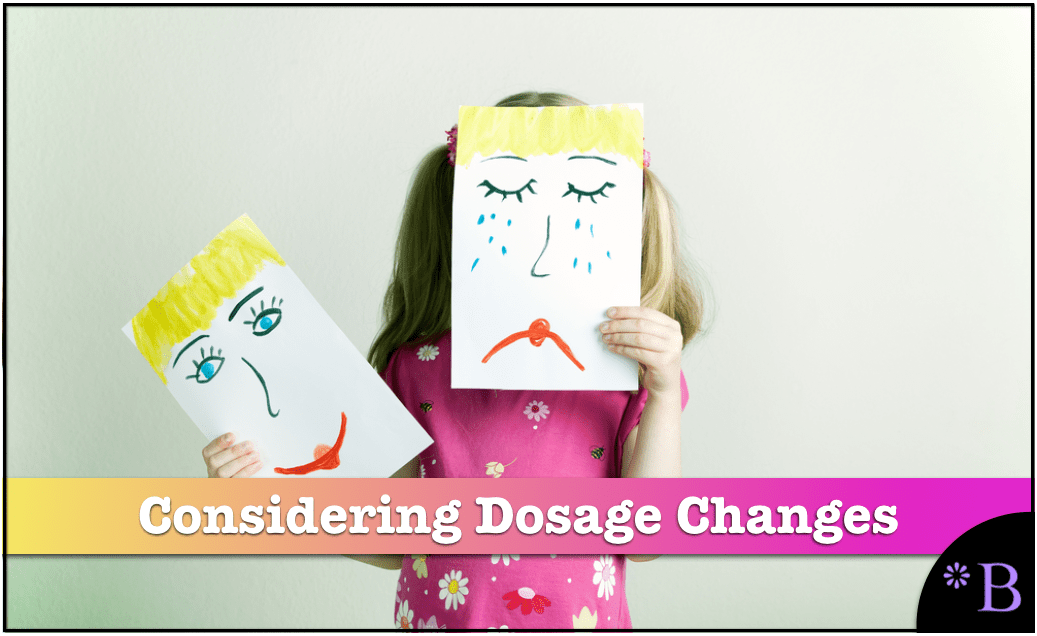What You Should Know When Your MD Changes Your Escitalopram Dosage
Executive Summary
- MDs usually react to patient claims of antidepressant ineffectiveness or antidepressant side effects by prescribing an increased Escitalopram dosage.
- This article covers the problems with this.

Introduction
One of the most critical factors related to antidepressants is the dosage. Usually, the dosage begins at a low level, but as time passes, this dosage is increased. There is a great deal that patients typically don’t know about this pattern of rising doses.
Important Topic #1: What Causes Increases in Escitalopram Dosage?
The two most prevalent reasons for MDs to increase dosages are that either the patient says the antidepressant is not working for them or the patient begins to complain about side effects. In the vast majority of cases, these statements by patients result in either increasing the dosage or switching the patient to another antidepressant.
This is a common feature that MDs often only have a few different ways of responding to complaints about the side effects of drugs.
From reviewing many patient case studies, the results are typically the following:
- Deny that the side effect is from the drug they prescribed.
- Switch the patient to another similar drug.
- Prescribe a drug to manage the side effects of the first drug.
- Increase the dosage of the first drug.
This issue with denying severe side effects is prevalent for antidepressants. Antidepressants like benzodiazepines and ADHD medications are “gateway drugs.” Antidepressants and ADHD medications can often lead to mood stabilizers, sleeping pills, and more.
Important Topic #2: There Is No Evidence of a Higher Escitalopram Dosage Working
The evidence for the effectiveness of antidepressants is weak, a topic covered in the article How Pharmaceutical Advertisements Lie About the Low Serotonin Hypothesis. (Subscription Required) If the evidence for antidepressants is so weak, why would increasing the dosage of an ineffective drug make any difference to depression? The following quote is from a person who took Lexapro at the site Good Therapy.
Today, I was feeling like crap and I had already taken my 20MG pill and I just needed something else so I took another 20. Today, it may have been a little too much, but within 20 minutes, I felt happy, really happy (laughing, too much), but not feeling funky like I was. I couldn’t believe, so that’s when I started looking to see what the highest dosage for Lexapro is.
It takes weeks for the brain to stop fighting against an antidepressant. This is the placebo effect in action.
The Pseudoscience of Increasing Escitalopram Dosages
MDs are not required to have any evidence that even high than-tested dosages of antidepressants are more effective than lower or beginning dosages. However, prescribing a higher dose makes it look like the MD is “doing something.”
The following quotation from an article in PubMed explains the lack of evidence for higher dosages of antidepressants.
Escitalopram is licensed for use at doses up to 20 mg but is used clinically at higher doses. There is limited published data at higher doses and none in the treatment of Major Depressive Disorder (MDD).
What does that mean? It means MDs prescribe higher doses than it is approved by the FDA to be used. This means that MDs not only have the ability to prescribe off-label (that is, for a condition for which it is not approved), but they can change the dosage, increasing the dosage, without any studies ever being submitted to the FDA that prove these higher dosages are more effective than lower dosages.
Part of this problem is that the MDs are then practicing pseudoscience, which is a pseudoscience that all health authorities also support. Here is an excellent example from the website of the Mayo Clinic on Paxil dosage.
If your dose is different, do not change it unless your doctor tells you to do so.
The amount of medicine that you take depends on the strength of the medicine. Also, the number of doses you take each day, the time allowed between doses, and the length of time you take the medicine depend on the medical problem for which you are using the medicine.
This makes it sound like the logic for the dosage is scientifically worked out — when it isn’t. The MD may go from 20 MG to 100 MG as they see fit without evidence connecting the dosage to the patient’s needs. This is also reinforced in the following quote from the Mayo Clinic website.
For posttraumatic stress disorder:
Adults—At first, 20 milligrams (mg) once a day, usually taken in the morning. Your doctor may adjust your dose as needed. However, the dose usually is not more than 50 mg per day.For social anxiety disorder:
Adults—At first, 12.5 milligrams (mg) once a day, usually taken in the morning. Your doctor may adjust your dose as needed. However, the dose is usually not more than 37.5 mg per day.